
Cara Bagley
Lehigh University
Analysis of Fast Shutter and Self-Aligning Mirror Mechanism for Transmission Line Offset Correction
Cara Bagley, A Zolfaghari, M. Gomez
In order to protect critical diagnostic components of ITER from exposure to an unabsorbed 6kW ECH microwave, the wave must be shut off or blocked in less than 10 msec. Since the amount of time to shut off the microwave is greater than 10 msec, a fast shutter was explored for this purpose. The shutter must have a 65 mm aperture in order to allow the wave to pass, but must close in 10 msec once actuated. A current 65 mm aperture shutter created by Uniblitz® can close in 52 msec. The closing mechanism is actuated by discharging an electromagnet which holds a spring in tension. Once discharged, the spring is free to return to its natural length, which closes the shutter. To decrease this close time, several possible solutions were proposed. Using analytical models as well as prototype generation and testing, improvements to the shutter speed were explored.
The vacuum vessel of ITER expands and contracts thermally, making it impossible to maintain a direct alignment of reflectometry microwaves passing through waveguides into the chamber. The Self-Aligning Mirror Mechanism for Transmission Line Offset Correction was designed for Equatorial Port 11 to maintain the alignment of reflectometry microwaves, which must pass through a window and into the vacuum chamber of ITER. This mechanism corrects for structural fluctuations and allows for more lenient tolerancing by altering the orientation of two mirrors which redirect the wave as the chamber expands and contracts. In order to analyze the behavior of this mechanism under various dynamic conditions, ANSYS Rigid Dynamics was used. Forces were applied in specified directions and the resulting displacement was studied. The addition of a spring between the mirror base plates was studied to limit the total displacement and return the mechanism to its nominal position. The geometric conditions of the mechanism required to maintain the alignment were studied.
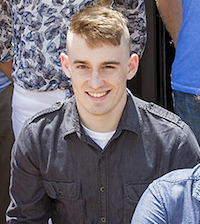
Tamas Budner
Ursinus College
Simulating Magnetic Reconnection Experiment (MRX) With a Guide Field Using Fluid Code HIFI
Tamas Budner, Yangao Chen, Eric Meier, Hantao Ji
Magnetic reconnection is a phenomenon that occurs in plasmas when magnetic field lines effectively "break" and reconnect resulting in a different topological configuration. In this process, energy that was once stored in the magnetic field is transfered into the thermal velocity of the particles, effectively heating the plasma. MRX at the Princeton Plasma Physics Laboratory creates the conditions under which reconnection can occur by initially increasing the current in two adjacent coils and then rapidly decreasing it with and without an applied external magnetic field. We simulate this experiment using a program called HiFi, and compare our results to experimental data from MRX. The purpose is to identify physics behind the observed reconnection process for the field line break and the resultant plasma heating. Working with a new program is always a new learning experience, so using HiFi gave me some experience working with that particular framework. I also learned some plasma physics by considering the boundary conditions near the edges of the experimental setup and in the code. I also learned some important data analysis skills by looking at both experimental data and simulation results. Ultimately, we were able to reproduce some of the experimental data from MRX using HiFi. When we take into account something known as the “Hall effect,” where a separation of charges creates a large electric field perpendicular to both the plasma current and the magnetic field, we are better able to reproduce experimental data. However, when we ignore this Hall effect, we do not match MRX data as well. The next step in our research would be to see how each term in the generalized Ohm's Law contributes to our results.
Poster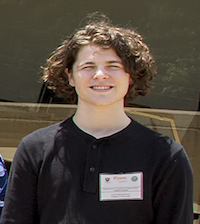
Luc D'Hauthuille
University of California, Santa Cruz
Finite Element Analysis of Transverse Compressive and Thermal Loads on a Superconducting Nb3Sn Wire Containing Voids
Luc d’Hauthuille, Yuhu Zhai, Logan Valenza, Charles Gentile
High field superconducting magnets play an important role in many large-scale physics experi- ments, particularly particle colliders and fusion confinement devices such as the LHC and ITER. The two most common superconductors used in these applications are NbTi and Nb3Sn. Nb3Sn wires are favored because of their significantly higher Jc(critical current density), allowing them to produce much higher magnetic fields. The main disadvantage of Nb3Sn is that the superconducting performance of the wire is highly strain-sensitive and it is very brittle. This strain-sensitivity is strongly influenced by two factors: plasticity and cracked filaments. Crack are induced by large stress concentrators that can be traced to the presence of voids in the wire. In this study we will attempt to understand the correlation between Nb3Sn’s irreversible strain and the void-induced stress concentrations around the void. We will develop an accurate 2D and 3D finite element model containing detailed filaments and different possible distributions of voids in a bronze-route Nb3Sn wire. We will apply a compressive transverse load for various cases of void distributions to simulate the natural stress and strain response of a Nb3Sn wire from the Lorentz force. This study will allow us to further improve our understanding of the effect voids have on the wire’s mechanical properties, and in so, the connection between the distribution of voids and performance degradation.
Poster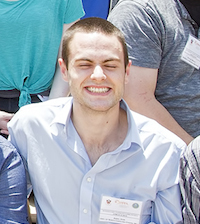
Ansel Dow
University of North Carolina, Chapel Hill
Simulating Plasma Sheaths with Commercial PIC Code
A. Dow, A. Khrabrov, J. Carlsson, I. Kaganovich, H. Schamis
The PIC code Large Scale Plasma (LSP) has many useful applications in the study of plasma sheaths. To effectively model plasma sheaths it must be possible to maintain a sheath in steady state equilibrium. This can be done by defining particle flow to a plasma near a conductive wall. We defined parameters for electron and ion injection into an empty chamber and observed the particle density and electric potential throughout this chamber as time progressed. Hydrogen ions with zero drift velocity and a thermal energy of 0.025 eV were used alongside electrons with zero drift velocity and a thermal energy of 1 eV. We also defined boundary conditions hoping to form a steady state sheath in our chamber. After running several simulations we failed to create a sheath. Through analysis of density profiles, potential profiles, electric field plots and phase plots we saw that while no sheath was created in our simulation, all conditions for sheath formation were satisfied except that of a floating-potential conductive wall. It is clear that the LSP floating-potential boundary condition does not function as it should in this simulation setup.
Poster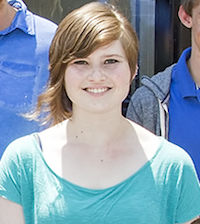
Eleanor Forbes
University of Washington
Spectroscopic analysis of wall conditioning methods in the National Spherical Torus Experiment
Eleanor Forbes, Vlad Soukhanovskii
Plasma confinement and performance in NSTX are reliant upon well-conditioned plasma facing components (PFCs). Past conditioning techniques used in NSTX include hot and cold boronization, lithium pellet injection (LPI), and lithium evaporation. The influx of hydrogen- containing molecules and radicals can be studied through spectroscopic observation of the hydrogen to deuterium (H/D) intensity ratio in the edge plasma. As an exercise in familiariza- tion with spectroscopy, a spectrometer was calibrated and used to calculate the H/D mass ratio. A code to determine H/D ratios has been developed and tested on known light sources before being applied to data from prior NSTX experiments. In general, boronization was found to reduce the H/D ratio, with further H reduction seen from cold boronization when compared to hot boronization. No correlation between LPI and H/D ratio was observed. Lithium evapora- tion produced a significant H decrease. In the future this analysis will be applied immediately following NSTX-U pulses to provide data on plasma-surface interactions.
Poster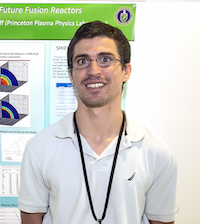
Leandro Fosque
Rutgers University
Novel breeding & shielding materials for future fusion reactors
Leandro Fosque, Michael Zarnstorff
The choice of materials in the tritium breeding blankets and the neutron shield has a direct impact on the overall size of fusion reactors. This paper explores the results of neutronics calculations for the breeding and shielding characteristics for a number of novel materials. Then combinations of the materials will be considered, to optimize the breeding and shielding at minimum total thickness. The current main blanket designs use solid lithium-bearing ceramics with beryllium as a neutron multiplier, or liquid lead-lithium, or liquid lithium. This study will investigate the use of liquid lithium-salts, either alone or in solution.
Poster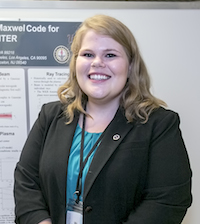
Sarah Gady
Whitworth University
Comparison of a 3-D GPU-Assisted Maxwell Code and Ray Tracing for Reflectometry on ITER
Sarah Gady, Shigeyuki Kubota, Irene Johnson
Electromagnetic wave propagation and scattering in magnetized plasmas are important diagnostics for high temperature plasmas. 1-D and 2-D full-wave codes are standard tools for measurements of the electron density profile and fluctuations; however, ray tracing results have shown that beam propagation in tokamak plasmas is inherently a 3-D problem. The GPU-Assisted Maxwell Code utilizes the FDTD (Finite-Difference Time-Domain) method for solving the Maxwell equations with the cold plasma approximation in a 3-D geometry. Parallel processing with GPGPU (General-Purpose computing on Graphics Processing Units) is used to accelerate the computation. Previously, we reported on initial comparisons of the code results to 1-D numerical and analytical solutions, where the size of the computational grid was limited by the on-board memory of the GPU. In the current study, this limitation is overcome by using domain decomposition and an additional GPU. As a practical application, this code is used to study the current design of the ITER Low Field Side Reflectometer (LSFR) for the Equatorial Port Plug 11 (EPP11).
Poster
Ben Israeli
Columbia University
Computational Analysis of W7-X Field Geometry
B. Y. Israeli, S. Lazerson, S. R. Hudson, D. A. Gates
Progress in characterization of the effect of trim coils on W7-X island divertor structure and relevant computational methods are described. The ability of W7-X to reach high beta long-pulse operation relies on the proper operation of the island divertor. Analysis has suggested that intrinsic error fields may significantly modify the island divertor magnetic field structure in W7-X. Adjustment via trim coils is intended as a solution. Initial efforts towards development of new code for the purpose of modelling the effects of trim coils is described, focusing on the implementation of a magnetic axis finding algorithm. Results of fieldline tracing demonstrating adjustment of the 5/5 island chain via trim currents is also discussed.
Poster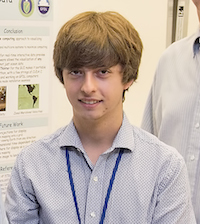
Michael Knyszek
University of California, Berkeley
A High Performance Visualization Architecture for f(x, y, t) Data in Python
Michael Knyszek, Eliot Feibush
We present a case study of high performance visualization in the high level programming lan- guage Python. As part of our case study, we implemented a generalized color mapping software architecture for visualizing many relatively small slices (approximately 30-40 megabytes in size) in large f (x, y, t)-like data sets on the order of hundreds of gigabytes in size. To efficiently apply color maps and composite the resulting images, we used libraries such as numpy for serial computation, multiprocessing for multicore computation, and PyCUDA for GPU computation. We then relied on netcdf4-python to read in data and the Python Imaging Library to generate output of our vi- sualization as a sequence of images. Additionally, due to Python’s high-level constructs, we were able to easily expose these three computational methods through a simple abstract interface which takes inspiration from fundamental UNIX ideas such as fork and errno. Our architecture, through this interface, can then easily be coupled with any Python user interface library to create a custom, efficient, and user-friendly visualization solution. Finally, we gathered performance data to prove our high-performance claim, achieving average run times on the order of seconds for roughly 6 million data points per image. The actual implementation of the project lasted approximately four weeks and is already coupled with a user interface and deployed on machines at the Geophysical Fluid Dynamics Laboratory.
Poster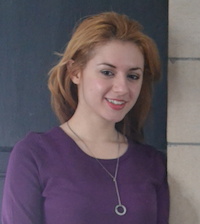
Hadar Lazar
University of Chicago
The effects of impurities and incident angle on the secondary electron emission of Ni(110)
H. Lazar, M. I. Patino, Y. Raitses, B. E. Koel, C. Gentile, E. Feibush
The investigation of secondary electron emission (SEE) of conducting materials used for magnetic fusion devices and plasma thrusters is important for determining device lifetime and performance. Methods to quantify the secondary electron emission from conduct- ing materials and to characterize the effects that impurities and incident angles have on secondary electron emission were developed using 4-grid low energy electron diffraction (LEED) optics. The total secondary electron yield from a Ni(110) surface was continu- ously measured from the sample current as surface contamination increased from reactions with background gases in the ultrahigh vacuum chamber. Auger electron spectroscopy (AES) and temperature programmed desorption (TPD) were used to examine the compo- sition and impurity levels on the Ni(110) surface. The total secondary electron yield was also measured at different incident angles.
Poster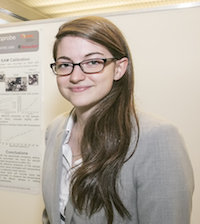
Amanda Lewis
Rensselaer Polytechnic Institute
Remote Temperature Sensing for Scanning Auger Microprobe
A. M. Lewis, C. H. Skinner
Liquid lithium is being studied for potential application as a plasma-facing material in tokamaks. This research focuses on an experiment designed to studying the temperature dependence of lithium wetting in a scanning auger microprobe, a process that is important for the application of lithium on tokamak walls. This paper describes the calibration of the infrared pyrometer that will be used to measure the temperature of the lithium sample. An effective emissivity value was used to correct for other factors affecting the pyrometer reading. The ZnSe lens and vacuum viewport were found to significantly decrease the effective emissivity, as did colder objects in the field of view. The field of view of the pyrometer was found to be 0.6cm in diameter, and in the scanning auger microprobe the effective emissivity was found to decrease slightly as the sample holder temperature increased.
Poster
Jacob Maddox
University of California, Berkeley
Measurements of electron temperature profiles on Alcator C-Mod using a novel energy-resolving x-ray camera
J. Maddox, L. Delgado-Aparicio, N. Pablant, K. Hill, M. Bitter, J. Rice
The most common electron temperature diagnostics, Thomson Scattering (TS) and Electron Cyclotron Emission (ECE), both require large diagnostic footprints and expensive optics. Another electron temperature diagnostic is the Pulse-Height- Analysis (PHA) system, which derives the electron temperature from the x-ray bremsstrahlung continuum. However, the main disadvantage of the PHA method is poor temporal resolution of the Si(Li) diode detectors. This paper presents a novel x-ray pinhole camera, which uses a pixilated Pilatus detector that allows single photon counting at a rate 1MHz per pixel and the setting of energy thresholds. The detector configuration is optimized by Shannon-sampling theory, such that spatial profiles of the x-ray continuum intensity can be obtained simultaneously for different energies, in the range from 4 to 16 keV. The exponential-like dependence of the x-ray intensity with photon energies is compared with a model describing the Be filter, attenuation in air, and detector efficiency, as well as different sets of energy thresholds. Electron temperature measurements are compared with TS and ECE measurements.
Poster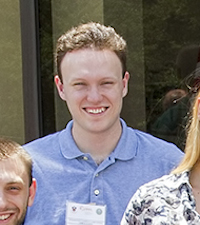
William McCarthy
Worcester Polytechnic Institute
Development of Prototype High Speed Piezoelectric Valve for LTX
William C. McCarthy, Richard Majeski
This project was an attempt to develop and test a small high speed piezoelectric gas valve for use on the LTX tokomak fusion reactor. Tokomaks confine very hot hydrogen plasmas in a doughnut shape using powerful magnetic fields. The center of the doughnut is very small and as such any valve placed there must also be very small. The valve developed in this project uses a piezoelectric crystal, a special kind of crystal that deforms by a small amount when an external electric field is applied to it. This deformation is usually measured in micrometers. The small scale of the deformation in addition to the lack of need for moving mechanical parts means that a valve can designed to be very small. The valve was constructed at the Princeton Plasma Physics Laboratory with funding by the Department of Energy SULI program. During the program several important lessons were learned about experimental design, vacuum systems, and piezoelectric crystals. For the project it was necessary to practice AutoCAD and many other aspects of experimental design such as: technical drawing, data collection techniques, and error reduction. Learning about vacuum systems involved specific methods of design, cleaning and maintenance. Utilization of Piezoelectric crystals required learning how to solder and read wiring diagrams. These are all important skills for any undergraduate student to learn and thus exemplify the mission of the DOE program goals.
Poster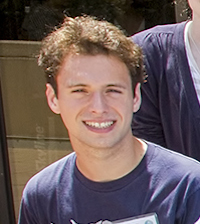
Michael McNulty
Rutgers University
Experiments with the Hydrodynamic Turbulence Experiment
Michael McNulty, Erik Gilson, Kyle Caspary, Hantao Ji, Michael Burin, Peter Sloboda
During the summer of 2015, the Hydrodynamic Turbulence Experiment (HTX) was used to study two phenomena: zonal flow generation and differential centrifugation. The study of zonal flow generation is essential to plasma physics since zonal flows can be a result of turbulence. Zonal flows appear in tokamaks and studying zonal flows will lead to a better understanding of turbulence. As for centrifugation, the HTX reduces secondary circulation, allowing for better separation of materials during the centrifugation process. Differential rotation allows for a stronger centrifugation. Background, collected data, and results of these experiments are presented in this paper.
Poster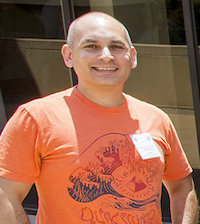
Ivan Merino
Los Angeles Valley College
Implementation of the Movable Helmholtz Coils on the Remote Glow Discharge Experiment (RGDX)
Ivan Merino, Nikhil Ramesh, Arturo Dominguez, Andrew Zwicker
Plasma is the state of matter obtained when an ionized gas starts producing light. This phenomenon occurs at high or low temperatures depending on the conditions surrounding. The RGDX recreates the conditions at low temperatures base on the Direct Current Breakdown of gasses. The breakdown of gasses is the point at which plasma forms; this point depends directly upon variables of pressure, distance, and voltage (Paschen’s law). One way to create plasma is by using two parallel electrodes and applying an electric potential difference (voltage) to them. The electrodes are contained inside of a tube with gas under controlled pressure. In this sense the RGDX is a machine with all the required elements to produce cool plasma using the air as a gas. This type of apparatus is known as a DC glow discharge tube. There is an additional element, the Helmholtz coils, mounted to the basic design of the DC glow discharge tube that allows us to study the behavior of plasma under the presence of external magnetic field. The RGDX is totally internet accessible designed as an educational tool to explore plasmas. It possesses the capability of allowing the user to control the distance between electrodes, the pressure inside the tube, the voltage at the electrodes, and the magnetic field intensity of the Helmholtz coils. According to Alex Millet, intern student at the Science Education Laboratory, experiments on the RGDX have shown evidence of a dependence of the Paschen’s curve on the externally applied magnetic field and its location. Our project was to supplement the RGDX with computer controlled movable Helmholtz coils to control the location and strength of the externally applied magnetic field. Using an Arduino Uno as our microcontroller we were able to create a linearly moveable plane with an online interface capability.
Poster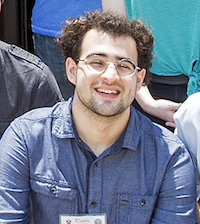
Richard Oliver
Brown University
Main Chamber X-Ray Emission from the PFRC-2 Capacitively Coupled Plasma
R. Oliver, J. Pearcy
We expand upon the observation of unexpected X-ray bremsstrahlung emission from the cold, tenuous plasmas produced by a capacitively coupled RF antenna in the Princeton Field Reversed Configuration (PFRC-2) device. These X-rays, ranging in energy from 0.9 to 5keV, indicate the presence of electrons with significantly higher energies than predicted by theoretical calculations, or observed in plasmas with similar parameters. Previous work by Jandovitz et al explores properties of X-ray emission from the expansion region (ER) of the machine. We designed, calibrated, and operated a system to allow detection of X-ray emission from the main chamber (MC) of the machine using an Amptek XR-100CR X-ray detector. We report on the response of MC X-ray emission to changing plasma parameters. We observed X-ray emission from pure hydrogen (H2), hydrogen-argon mixture, and pure argon plasmas. In all cases, X-ray emission increased with increasing power and decreased with increasing pressure. In a pure argon plasma with similar plasma parameters, X-ray emission is significantly higher, contrary to previous results in the expansion region. X-ray emission was also measured over a spatial scan in the radial direction. Potential explanations for these high-energy electrons and X-rays are being explored.
Poster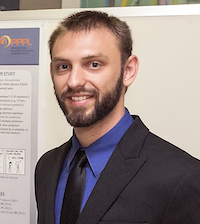
Matthew Parsons
Drexel University
Preparation for a Statistical Study of Plasma Disruptions in JET
Matthew S. Parsons, William M. Tang, Eliot Feibush
Plasma disruptions in tokamaks involve a sudden loss of confinement, and the resulting thermal and electromagnetic loads to the walls can damage the machine. In order to prevent this it is necessary to predict an oncoming disruption with sufficient time for mitigation actions to be taken. While analytical models fail to meet this requirement, statistical machine learning methods offer another solution. Here the groundwork is laid for identifying diagnostic signals which improve present capabilities for predicting disruptions using Support Vector Machines.
Poster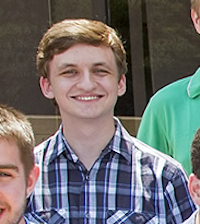
Michael Peters
Indiana University, Bloomington
Development of a Novel Method for Determination of Momentum Transport Parameters
M. Peters, W. Guttenfelder, S. M. Kaye, F. Scotti, W. M. Solomon
The toroidal momentum pinch velocity Vφ and diffusivity χφ in NSTX were previously determined from the transient response of the toroidal rotation Ω following applied n=3 magnetic perturbations that brake the plasma. Assuming Π = nmR2(−χφ∇Ω + VφΩ), where the momentum flux Π is determined using TRANSP, these local analyses used fits to Ω and ∇Ω to obtain χφ and Vφ one flux surface at a time. This work attempts to improve the accuracy of the inferred χφ(r) and Vφ(r) profiles by utilizing many flux surfaces simultaneously. We employ non-linear least-squares minimization that compares the entire perturbed rotation profile evolution Ω(r,t) against the profile evolution generated by solving the momentum transport equation. We compare the local and integrated approaches and discuss their limitations.
Poster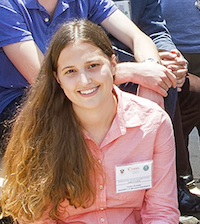
Hanna Schamis
University of Michigan, Ann Arbor
Excitation of Ion Acoustic Waves in Confined Plasmas with Untrapped Electrons
Hanna Schamis, Igor Kaganovich, Alexander Khrabrov, Johan Carlsson
Various plasma propulsion devices exhibit strong electron emission from the walls either as a result of secondary processes or due to thermionic emission. To understand the electron kinetics in plasmas with strong emission, we have performed simulations using a reduced model with the LSP particle-in-cell code. This model aims to show the instability produced by untrapped electrons that propagate across the plasma, similarly to a beam, and can drive ion acoustic waves in the plasma bulk.
Poster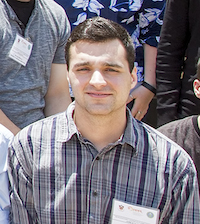
Ian Stewart
Rutgers University
Simulations of EHO equilibria in the pedestal region of NSTX utilizing BOUT++
I.G. Stewart, D.R. Smith
In current tokamak experiments, high energy plasma erupts from the edge region in a phenomenon know as an edge localized mode (ELM). ELMs could potentially damage plasma-facing components of tokamaks, including the first wall and diverter region. ELM-free operation has been found in the DIII-D experiment as well as in NSTX, where studies have observed a quiescent, high confinement mode (QH-mode) with a characteristic edge harmonic oscillation (EHO). These EHOs provide a mechanism for better particle transport in the plasma edge, preventing ELM occurrence and plasma eruption. However, the physics underlying EHOs and their role in QH-mode is still not well resolved. This study used a 3D plasma fluid code, BOUT++, to compare high-β reduced ideal MHD simulations based on ELM and EHO equilibria obtained from EFIT data from NSTX. The study was successful in reproducing results found in a previous study of EHOs by Osborne et al. using the ELITE simulation code, namely an increase in growth rate when the experimentally observed toroidal mode number matched the simulation mode number. Additionally, simulations using ELM equilibria exhibited growth rates that were at least an order of magnitude greater than their EHO equilibria counterparts.
Poster
William Wallace
Laney College, Oakland
Continued Development of Python-Based Thomson Data Analysis And Associated Visualization Tool for NSTX-U
William Wallace, Jared Miller, Ahmed Diallo, Ben LeBlanc
MultiPoint Thomson Scattering (MPTS) is an established, accurate method of finding the temperature, density, and pressure of a magnetically confined plasma. Two Nd:YAG (1064 nm) lasers are fired into the plasma with a effective frequency of 60 Hz, and the light is Doppler shifted by Thomson scattering. Polychromators on the NSTX-U midplane collect the scattered photons at various radii/scattering angles, and the avalanche photodiode voltages are saved to an MDSplus tree for later analysis. IDL code is then used to determine plasma temperature, pressure, and density from the captured polychromator measurements via Selden formulas. Previous work converted the single-processor IDL code into Python code, and prepared a new architecture for multiprocessing MPTS in parallel. However, that work was not completed to the generation of output data and curve fits that match with the previous IDL. This project refactored the Python code into a object-oriented architecture, and created a software test suite for the new architecture which allowed identification of the code which generated the difference in output. Another effort currently underway is to display the Thomson data in an intuitive, interactive format.
Poster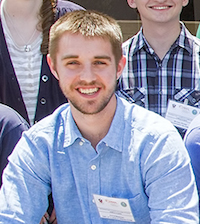
Justin Weberski
University of Illinois, Urbana-Champaign
Analysis of Edge Harmonic Oscillations Observed During Operation of the National Spherical Tokamak Experiment
J. D. Weberski, D.R. Smith
Edge harmonic oscillations (EHOs) have been observed during operation of the National Spherical Tokamak Experiment (NSTX) in which no edge localized modes have appeared. This paper will utilize beam emission spectroscopy and Mirnov coil diagnostic data to analyze the frequency, mode number, and amplitude of EHOs observed in NSTX. Additionally, charge exchange recombination spectroscopy and multiple point Thomson scattering diagnostics will be used to analyze the plasma pedestal region, while outputs from a magnetohydrodynamics equilibrium fitting code will be used to characterize the global plasma during the occurrence of an EHO. This extensive analysis highlighted several relationships between EHOs and various plasma parameters. Notable data trends included access to higher toroidal mode numbers at lower electron collisionality, lower toroidal rotation speed, and within narrows bands of electron pressure and density pedestal heights and gradients. Additionally, larger amplitude EHOs were preferentially detected within a range of toroidal rotation speed and at larger electron density and pressure pedestal gradients and heights. Finally, correlations between high confinement times and reduced EHO activity as well as reduced frequency gap between adjacent EHOs were also found.
Poster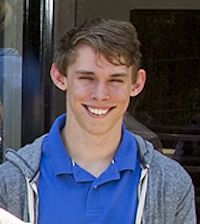
Gregg Willcox
Washington University, St. Louis
Flow Dynamics and Diamagnetic Drift in Asymmetric Guide Field Reconnection
Gregg Willcox, Jongsoo Yoo, Jon Almonte, Will Fox, Masaaki Yamada, Hantao Ji
We present experimental analysis of asymmetric reconnection in the presence of a large guide field. Due to the large density asymmetry and guide field, diamagnetic drifts dominate the movement of the X-line within the plasma. These drifts limit the reconnection rate severely, as the relative drift between electrons and ions approaches the Alfven speed of the plasma. Ion flow parallel to the B-field are evident as well along the separatricies, and seem to arise primarily due to the guide field. Hall effects are also evident and discussed. We compare these results’ agreement with astrophysical and computational results from recent years.
Poster
Nathaniel Wirgau
University of Michigan
Development of a single shot coherent Rayleigh Brillouin scattering capable laser system
Nathaniel Wirgau, Alexandros Gerakis
A laser system capable of performing single shot coherent Rayleigh Brillouin scattering (CRBS) was designed, constructed and tested. CRBS is a phenomenon which has been used as a laser diagnostic capable of resolving characteristic properties of a gaseous medium such as its temperature,shear and bulk viscosity, as well as vibrational and rotational relaxation rates of the medium in question with a high degree of temporal and spatial resolution (200ns and 150um, respectively).
Poster